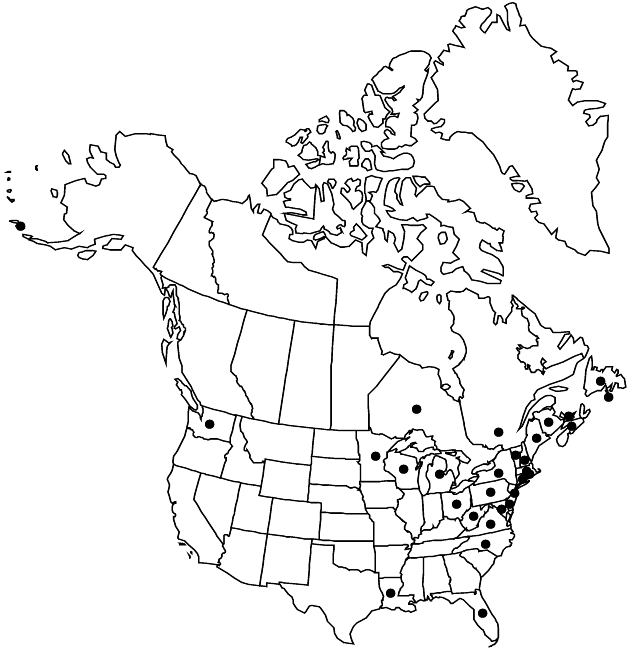Difference between revisions of "Artemisia stelleriana"
Nouv. Mém. Soc. Imp. Naturalistes Moscou 3: 79, plate 5. 1834.
FNA>Volume Importer |
imported>Volume Importer |
||
| Line 47: | Line 47: | ||
|publication year=1834 | |publication year=1834 | ||
|special status= | |special status= | ||
| − | |source xml=https:// | + | |source xml=https://bibilujan@bitbucket.org/aafc-mbb/fna-data-curation.git/src/bb6b7e3a7de7d3b7888a1ad48c7fd8f5c722d8d6/coarse_grained_fna_xml/V19-20-21/V19_925.xml |
|tribe=Asteraceae tribe Anthemideae | |tribe=Asteraceae tribe Anthemideae | ||
|genus=Artemisia | |genus=Artemisia | ||
Revision as of 20:42, 27 May 2020
Perennials, (15–)20–60(–70) cm (mat-forming), sometimes faintly aromatic (rhizomes creeping, relatively thin). Stems 1–3, erect or ascending, white, simple (stout), densely tomentose to floccose. Leaves basal and cauline (petiolate), silver-gray; blades oblanceolate, (proximalmost) 3–10 × 1–5 cm, pinnatifid (lobes relatively broad, rounded; distal leaves, on flowering stems, smaller), faces densely tomentose. Heads (erect or spreading, peduncles 0 or to 3 mm) in dense, paniculiform, racemiform, or spiciform arrays 8–20 × 2–4 cm. Involucres broadly campanulate, 5–8 × 6–7 mm. Phyllaries broadly lanceolate, tomentose. Florets: pistillate 12–16; bisexual 25–30; corollas yellow (narrow or tubular), 3.2–4 mm (unusually large), glabrous or sparsely hairy (style branches prominent, erect, blunt). Cypselae (dark brown) narrowly oblong-linear (slightly flattened, smooth), 3–4 mm, glabrous. 2n = 18.
Phenology: Flowering early spring–fall.
Habitat: Sandy soils, coastal strand
Elevation: 0–200 m
Distribution

St. Pierre and Miquelon, N.B., Nfld. and Labr. (Nfld.), N.S., Ont., P.E.I., Que., Alaska, Conn., Del., Fla., La., Maine, Md., Mass., Mich., Minn., N.H., N.J., N.Y., N.C., Ohio, Pa., R.I., Vt., Va., Wash., W.Va., Wis., n Europe, e Asia (Japan, Kamchatka).
Discussion
Artemisia stelleriana is apparently native along the western tip of the Aleutian islands (D. F. Murray, pers. comm.). It is an attractive ornamental and, in parts of its range in the flora area, it appears to have escaped from cultivation and is naturalized in beach dunes and other sandy habitats.
Selected References
None.